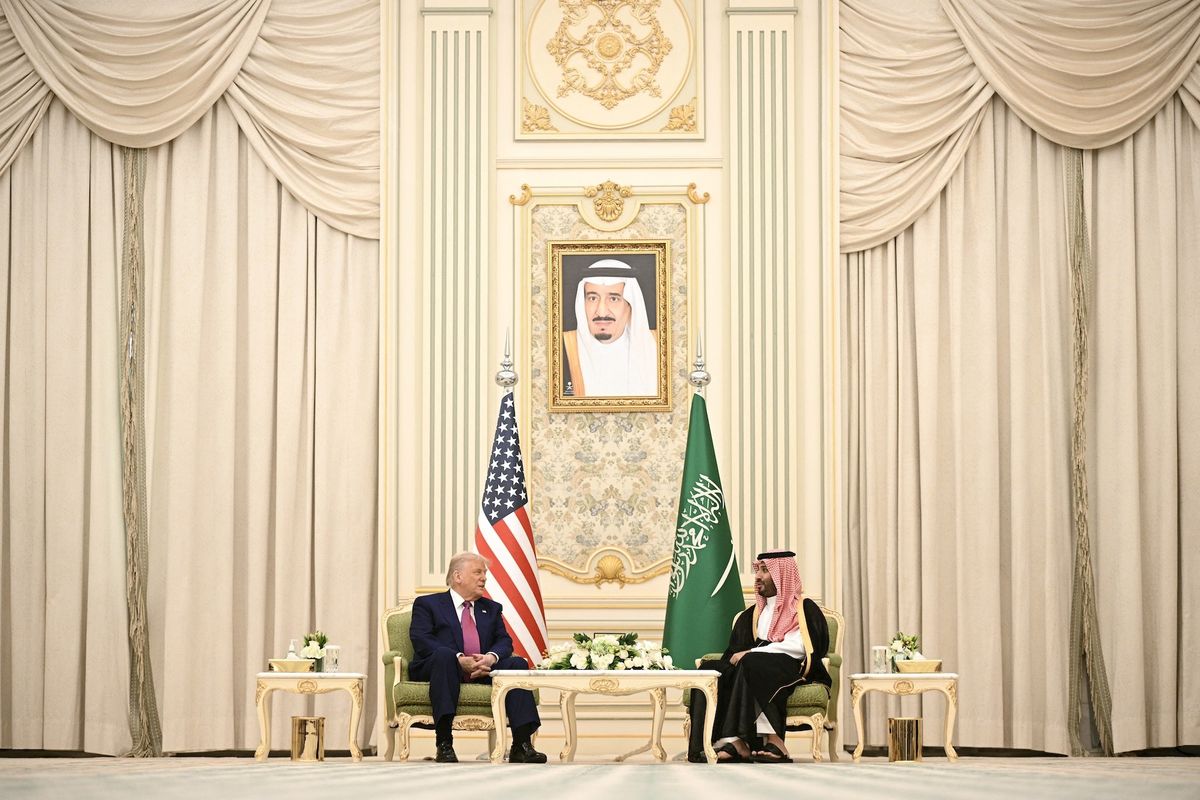The Cipher Brief is bringing you a range of expert perspectives on Syria this week. General Jack Keane (Ret.), the chairman of the Institute for the Study of War, spelled out The Limits of U.S. Influence in Syria on Monday with a solid assessment of U.S., Iranian and Russian influence in the country.
Tomorrow, we will hear from the authors of a Congressionally mandated report on the region as well as from Dr. Kimberly Kagan, founder and Director of the Institute for the Study of War.
Today, we hear from Brigadier General Mark Kimmitt, U.S. Army (Ret), who just left the region this week. Kimmitt also served as the Assistant Secretary of State for Political-Military Affairs from 2008-2009. Prior to that, he was the Deputy Assistant Secretary of Defense for Middle East Affairs from 2006-2008.
OPINION — In a terse press statement released on 6 October, the White House announced another phase, possibly the last phase, of U.S. military operations in Syria. Resonant with President Donald Trump’s personal voice, the statement referred to a phone call between President Trump and Turkish President Recep Tayyip Erdogan where it was agreed that the Turkish military would be allowed to “(move) forward with its long-planned operation into Northern Syria. The United States Armed Forces will not support or be involved in the operation, and United States forces, having defeated the ISIS territorial ‘Caliphate’, will no longer be in the immediate area”. This marks the end of the multinational “Safe Zone” and U.S. forces were soon withdrawing from the area.
The statement also announced that Turkey would be taking responsibility for all ISIS prisoners in the area. Taking a swipe at the Europeans, the release asserted “The United States Government has pressed France, Germany, and other European nations, from which many captured ISIS fighters came, to take them back, but they did not want them and refused. The United States will not hold them for what could be many years and great cost to the United States taxpayer.”
Not unlike the 19 December 2018 Syria withdrawal announcement by President Trump, this decision was a surprise to everyone but should have come as a shock to no one. The 6 October 2019 decision, like the 19 December 2018 decision, reflects the President’s long held view and campaign promise to “get out of dumb wars in the Middle East”, a decision to which he has been uncharacteristically consistent, particularly in his inaction against Iran in response to tanker seizures, provocative (and repeated) rocket fire over the U.S. Embassy in Baghdad, the recent Abqaiq attack and clear evidence of chemical use by Bashar al-Assad’s forces in Syria. While many decry his “inaction”, his “lack of resolve” or his repudiation of U.S. commitments to the Persian Gulf since 1979, his actions have been unwavering since his time on the campaign trail.
Brigadier General Mark Kimmitt (Ret.), Former Assistant Secretary of State for Political-Military Affairs
So where does this leave the situation on the ground and the status of the ISIS prisoners? The implications go far beyond the immediate operation and may give some insight into how future foreign policy decisions – especially in the Middle East – will emerge from this administration.
The End of the Safe Zone
The agreement between Presidents Trump and Erdogan ends the significant disagreements over the Syria Safe Zone. As I wrote here on 20 December 2018, the Safe Zone was needed by Turkey to address Turkish counterterrorism concerns and to establish a resettlement area for the millions of Syrian refugees in Turkey burdening the government’s capacity to support them.
For the United States, the Safe Zone was meant to be a buffer zone between the SDF forces (mostly Kurdish YPG forces) and the Turkish forces who see the YPG as the Syrian branch of the PKK and a threat to Turkey. It was also seen as a foundation for a United States role in a post-war Syria as well as a strategic outpost to counter malign Iranian influence in the region. The Safe Zone negotiations were fortunate to have a seasoned diplomat in Ambassador James Jeffrey, but in the end, Ambassador Jeffrey could satisfy neither the Turkish nor the U.S. government.
Going forward, there may be several consequences to this decision. For its supporters, this will go far in resetting US-Turkish relations. It will not settle the disputes over the purchase of S-400 systems, the cancellation of the F-35 sale, the harboring of Fethullah Gulen, the belief that the U.S. played a role in the 2016 coup attempt or any number of other diplomatic disputes, but it is a major public relations victory for President Erdogan, and one should expect him to act more conciliatory to the U.S. in the future. There remain significant bilateral interests between the U.S. and Turkey, particularly regarding NATO, and allowing President Erdogan to “win one” should pay benefits to this important relationship.
The detractors of the decision will cite the responsibility to protect the YPG from Turkish assaults. As the most important proxy force in Syria, it is not hyperbole to assert that the ISIS caliphate would still be alive were it not for the battlefield prowess and courage of the Kurdish-aligned YPG. The detractors claim leaving the Safe Zone area is a betrayal to those who have fought for the U.S. and will have consequences for any future operation that depends on proxy forces. If the United States will abandon their YPG allies, why would any proxy force work alongside the U.S. in the future? Further, the detractors assert that leaving Syria gives away any leverage in post-war Syria and further diminishes U.S. influence in the region.
Resolving the “Prisoners Dilemma”
Since my Cipher Brief article on 9 June, there has been no resolution to the “Prisoners Dilemma” in Northern Syria. Almost 60,000 foreign-born ISIS fighters, spouses and children languish in camps such as Al Hol (cynically known as “Hell Hole”), with a few prisoners finding release or rendition to their home countries. Neither those countries nor third party nations want this corps of unrehabilitated and potentially recidivist terrorists in their midst, seemingly preferring a policy of benign neglect and culpable ignorance.
President Trump ostensibly found a solution by pinning the responsibility on President Erdogan, at least for some of them. The press release cryptically notes that “Turkey will now be responsible for all ISIS fighters in the area captured over the past two years in the wake of the defeat of the territorial ‘Caliphate’”, but this comment raises more questions than it answers. Who will be responsible for prisoners taken before 2017? If the agreement applies only to ISIS fighters, who will be responsible for the women and children? Will the prisoners stay in Syria or will they be taken to facilities in Turkey? Does the Government of Turkey even have the capability to manage a 60,000-prisoner population? The list of unanswered questions is long, but the way the press release was written indicates that President Erdogan has substantial room to maneuver.
Brigadier General Mark Kimmitt (Ret.), Former Assistant Secretary of State for Political-Military Affairs
Facts are a stubborn thing and President Trump is even more stubborn. The 6 October announcement is a fact and there is little chance of a reversal. Military and congressional pressure may soften the terms of the agreement, but the immediate withdrawal of U.S. forces from the border posts of Tel Abyad and Ras al Ayn would suggest that most, if not all, of the remaining troops will soon depart from the Safe Zone area.
It is likely that significant U.S. military involvement will soon come to an end in Syria. If so, expect the historical record to be kind, and the high financial (and low physical) cost it took to defeat the ISIS caliphate will likely serve as a model for similar operations in the future. Arguing the operation was a failure because of “tasks left undone” must be understood in the context of the mission assigned by the Obama administration. Nowhere in the original mission was nation building, a long-term alliance with a group allied with (if not part of) a declared terrorist organization, humanitarian operations nor an overt mission to counter Iranian influence – all examples of classic mission creep. If these missions were presented to Congress, both Houses would have (and should have) declared these tasks outside the Authorization for the Use of Military Force (AUMF). It is truly ironic that President Trump is being criticized for terminating an operation that met the objectives set out by President Obama, calling out the military and diplomats for congressionally unauthorized mission creep, and preventing an open-ended conflict with no clear termination goals. To those that assert that our departure will lead to the resurrection of the Caliphate, this responsibility now falls to the Turkish military, hopefully augmented by U.S. intelligence and special operators.
If this is the end of U.S. operations in Syria, history will be kind. Measuring the results in Syria against the U.S. military record in the Middle East certainly puts this operation among the most successful to date. Few lives lost, an existential threat destroyed, follow-on operations handed over to a willing NATO ally. These are conditions yet to be attained in overt operations in Iraq and Afghanistan and in a host of covert operations around the region. While there is room for legitimate criticism on both sides of the argument, a decision was made, and it is in America’s best interest to see it through. Sometimes good enough is good enough.
Read also The Limits of U.S. Influence in Syria by Cipher Brief expert and ISW Chairman, Gen. Jack Keane (Ret.) exclusively in The Cipher Brief
Read more expert insights and analysis on national security issues in The Cipher Brief













